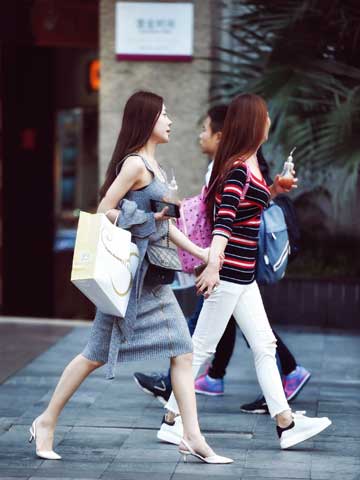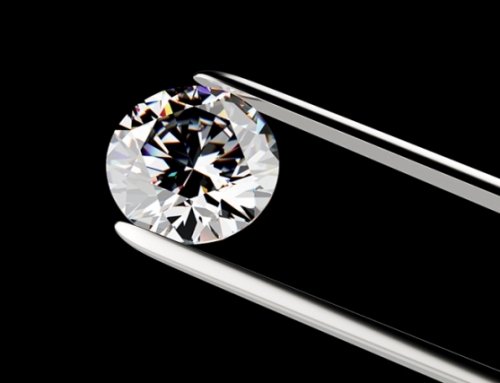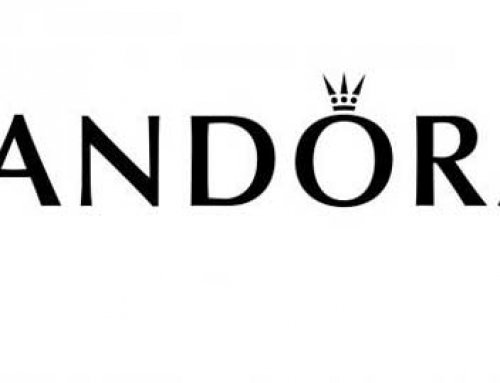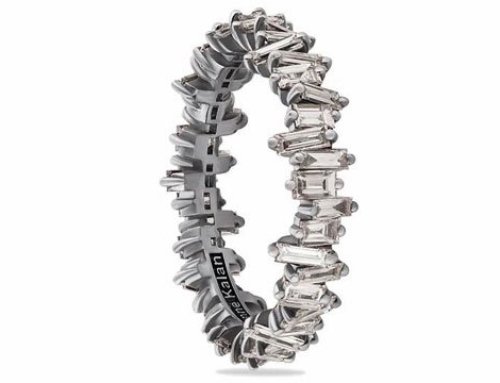You don’t have to be in China to sell to Chinese people. That’s the message from luxury marketing experts, who point out that tourists, students and immigrants from the world’s largest fine-jewelry consumer have a huge impact on the retail sector in Western countries.
“The joke in the high-end luxury-goods community is that if you want to start a new luxury brand, the place to put it is where Chinese tourists go,” says Marty Hurwitz, CEO of US-based research group MVI Marketing. “Chinese tourists and their spending power in the US — particularly in the major population centers — are driving brand growth in many categories, but certainly in jewelry.”
Large jewelers from the greater China region know this, and have been launching stores in North America to capitalize on local demand from consumers who already recognize these brands. In 2016, both Chow Tai Fook and Luk Fook opened stores in Flushing, New York, a neighborhood with a large Chinese population. Luk Fook also has stores in San Francisco, California, as well as in Canada. Expats are “actually driving a lot of luxury spending now,” Hurwitz notes. Hong Kong-based retailers’ expansion into the American market is “a really solid strategy, because there are pockets of There were 2.3 million Chinese immigrants in the US in 2016, up from 1.2 million in 2000 and 1.7 million in 2010, according to Migration Policy Institute, a Washington-based think tank. Their biggest population hubs were New York, San Francisco and Los Angeles, notes the organization, adding that Chinese expats are twice as likely as US-born Americans or other immigrants to have a graduate or professional degree, because many of them arrived as college students or highly skilled workers. Study partners Other Western markets have seen a similar phenomenon. High-spending Chinese students in the UK number about 95,000, with each of them receiving an average of 3.3 visits per year from family members, reports Anglo-Chinese digital-marketing agency Emerging Communications. Those students then act as retail tour guides, showing their relatives where to buy things. The total number of Chinese tourists in British locations is higher still. “Rather than taking the large step of establishing a presence in mainland China in order to sell to the growing millennial audience, it is possible to enter the market in a relatively easy and modular way by targeting the half-million wealthy Chinese tourists that visit each year, the vast majority of which are millennials focused on buying,” explains Emerging Communications CEO Domenica Di Lieto. On their terms However, retailers have to get it right when selling to Chinese people, whether in China or elsewhere. Chinese millennials can easily distinguish between brands that are really dedicated to attracting their business, and those that just want to make money fast, says Di Lieto. They hate clumsy translations, overly direct promotions, and marketing that makes presumptions about buyers. “There have been some very big British names that have arrived in China and assumed that doing what they do elsewhere will work,” she adds. “Brands ranging from [large UK supermarket chain] Tesco to [fashion designer] Paul Smith quickly learned the hard way that no matter who you are, you have to do things the Chinese way when selling to Chinese consumers.” Upmarket London department store Harrods was much more successful with Chinese tourists because it realized it had to play on the consumers’ terms, Di Lieto continues. Years ago, the retailer carried out research and discovered that Chinese consumers visiting the UK were not familiar with the brand — the first time it had found such broad-scale unawareness of its name in the global market. Since then, it has developed Mandarin mobile apps for its London store, begun accepting Chinese credit cards and payment through WeChat and Alipay, hired Mandarin-speaking store assistants, and started conducting tours in the language. It also uses Alipay’s localized marketing tools to send automatic messages to consumers who are near the store, Di Lieto says. “Harrods…understood it had to attract Chinese consumers and serve them on their terms, and as a result, the average purchase spend per tourist is now more than GBP 2,000 [about $2,610],” she states. Social life Chinese consumer behavior is already changing retail in a way many people may not believe, according to MVI’s Hurwitz. Mobile shopping is much more popular among Asians than among Americans, so much so that jeweler Michael Hill has staff members in its New Zealand stores who are exclusively selling via social media platforms such as WeChat, he reports. And they’re bringing in good money in the process. “These consumers are making remarkable, thousand-dollar purchases with just an image from the sales rep,” Hurwitz notes. “It’s brilliant. I don’t think that’s happening quite as much in the US, but clearly an immigrant population in the US has more purchasing power, [and] I expect that will happen more. In my family, we’re certainly doing more of that.” Retailers looking for an entry into the Chinese market can start at home — but they can only succeed if they truly know their target audience.







